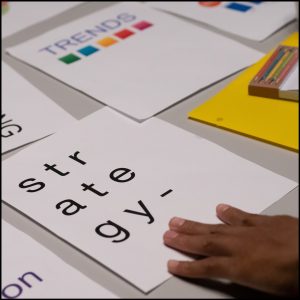As a college student, you’re no stranger to the whirlwind of information that comes your way during lectures. The professor’s words, the presentation slides, your peers’ insights – it’s a lot to process. Effective note-taking isn’t just a skill; it’s an art that can significantly impact your understanding and retention of the material. Here, we dive deep into note-taking strategies that go beyond the basics and can make a real difference in your college experience.
The Psychology of Pen and Paper
 In our digital age, the allure of laptops and tablets for note-taking is undeniable. However, recent research suggests that there’s something uniquely powerful about the connection between pen, paper, and memory. Studies have shown that jotting down notes by hand enhances comprehension and retention. The act of physically writing engages your brain in a more profound way, helping you process and synthesize information effectively.
In our digital age, the allure of laptops and tablets for note-taking is undeniable. However, recent research suggests that there’s something uniquely powerful about the connection between pen, paper, and memory. Studies have shown that jotting down notes by hand enhances comprehension and retention. The act of physically writing engages your brain in a more profound way, helping you process and synthesize information effectively.
Mind Mapping for Multidimensional Thinking
The traditional linear note-taking style might not always be the best fit for the multidimensional nature of lectures. Enter mind mapping – an innovative strategy that mirrors the web-like way our brains make connections. Creating visual mind maps during lectures can help you capture main ideas, subtopics, and their relationships all in one place. It’s like your notes are a living organism, growing and evolving with each new piece of information.
The Power of Analog Annotations
 When was the last time you scribbled in the margins of a book or highlighted a passage that resonated with you? These analog annotations are not just relics of the past; they’re potent tools for engagement and comprehension. Applying this technique to your note-taking can help you develop a personal shorthand for important concepts, mark areas that need further exploration, and even react with your own insights in real time.
When was the last time you scribbled in the margins of a book or highlighted a passage that resonated with you? These analog annotations are not just relics of the past; they’re potent tools for engagement and comprehension. Applying this technique to your note-taking can help you develop a personal shorthand for important concepts, mark areas that need further exploration, and even react with your own insights in real time.
Question the Content
One way to truly internalize the material is to engage with it actively. Rather than merely transcribing what the lecturer says, jot down questions that arise in your mind as you listen. These questions can be points of clarification, extensions of the topic, or even challenges to the presented ideas. By questioning the content, you’re transforming yourself from a passive recipient to an active participant in your learning journey.
Linking Concepts through Analogies
 Analogies are bridges that connect new information to something familiar. Integrating analogies into your note-taking strategy can help you grasp complex concepts faster. If a biology lecture delves into cell structures, drawing parallels between these structures and, say, a bustling city can create a mental image that sticks. This not only aids in understanding but also adds a touch of creativity to your notes.
Analogies are bridges that connect new information to something familiar. Integrating analogies into your note-taking strategy can help you grasp complex concepts faster. If a biology lecture delves into cell structures, drawing parallels between these structures and, say, a bustling city can create a mental image that sticks. This not only aids in understanding but also adds a touch of creativity to your notes.
Embrace Cognitive Offloading
Your brain is a remarkable organ, but it has its limits. Cognitive offloading is the practice of using external tools to store and manage information, allowing your brain to focus on understanding and critical thinking. For instance, instead of frantically scribbling down every detail during a lecture, consider using a voice recorder to capture the audio. This way, you can immerse yourself in the discussion without the fear of missing out on crucial insights.
The Visual-Spatial Advantage
 If you’re a visual learner, leveraging the power of spatial arrangement can enhance your note-taking game. Allocate specific areas of your notebook for distinct topics or ideas. As the lecture progresses, your spatial arrangement becomes a visual guide to the lecture’s flow and structure. This method taps into your brain’s ability to remember spatial patterns, creating a mental map of the information.
If you’re a visual learner, leveraging the power of spatial arrangement can enhance your note-taking game. Allocate specific areas of your notebook for distinct topics or ideas. As the lecture progresses, your spatial arrangement becomes a visual guide to the lecture’s flow and structure. This method taps into your brain’s ability to remember spatial patterns, creating a mental map of the information.
Annotate with Digital Detachment
While digital devices have their place, they can also be breeding grounds for distractions. If you’re using a tablet or laptop for note-taking, consider a deliberate approach to annotations. Use digital tools to underline, highlight, or annotate without losing the tactile feel of paper. This technique merges the convenience of technology with the focused engagement of analog methods.
Leverage Multisensory Encoding
 Memory is often linked to the senses. By engaging multiple senses during note-taking, you can enhance your recall. Try associating specific colors with different concepts, using scents or textures (like scented pens or textured paper) to create a multisensory experience, or even playing soft background music that complements the subject matter. These sensory cues create unique memory triggers when you review your notes.
Memory is often linked to the senses. By engaging multiple senses during note-taking, you can enhance your recall. Try associating specific colors with different concepts, using scents or textures (like scented pens or textured paper) to create a multisensory experience, or even playing soft background music that complements the subject matter. These sensory cues create unique memory triggers when you review your notes.
Collaborative Note Fusion
Collaboration isn’t just for group projects; it can also transform your note-taking experience. Consider organizing note-sharing sessions with peers. Each person’s perspective can shed new light on the same information, enriching your understanding. Merge your notes, discussing and debating the content to create a comprehensive collective resource that benefits everyone.
Mindful Revision and Spaced Repetition
 Note-taking doesn’t end with the lecture; it’s an ongoing process. Embrace the art of mindful revision by revisiting your notes regularly. Combine this with spaced repetition – a technique where you review material at increasing intervals. This strategy exploits the psychological spacing effect, optimizing your memory retention and ensuring that the material stays fresh in your mind.
Note-taking doesn’t end with the lecture; it’s an ongoing process. Embrace the art of mindful revision by revisiting your notes regularly. Combine this with spaced repetition – a technique where you review material at increasing intervals. This strategy exploits the psychological spacing effect, optimizing your memory retention and ensuring that the material stays fresh in your mind.
Link to External Resources
Remember that the world of learning extends beyond your classroom. Linking your notes to external resources can provide a more comprehensive understanding of the topic. For instance, if the lecture delves into a psychological theory, link your notes to relevant articles, videos, or podcasts that elaborate on the concept. This transforms your notes into a gateway to a broader world of knowledge.
Conclusion
 Effective note-taking strategies aren’t just about capturing information; they’re about creating a personalized system that aligns with your learning style, enhances understanding, and boosts retention. As a college student, you have the opportunity to craft your unique note-taking approach that goes beyond convention. Embrace the psychology of memory, leverage technology wisely, and explore collaborative avenues – all while cultivating a mindful approach to revision.
Effective note-taking strategies aren’t just about capturing information; they’re about creating a personalized system that aligns with your learning style, enhances understanding, and boosts retention. As a college student, you have the opportunity to craft your unique note-taking approach that goes beyond convention. Embrace the psychology of memory, leverage technology wisely, and explore collaborative avenues – all while cultivating a mindful approach to revision.
Remember, the act of note-taking is a journey of intellectual exploration. As you implement these strategies, you’re not just documenting information; you’re fostering a deeper connection with the material, enriching your learning experience, and paving the way for your academic success.
Next Steps: Elevate Your Learning Journey
 Congratulations, you’re now armed with an arsenal of dynamic note-taking strategies that transcend the ordinary. It’s time to put these techniques into action and witness the transformation in your learning experience. Start by selecting a strategy that resonates with you – whether it’s mind mapping, analog annotations, or multisensory encoding – and incorporate it into your next lecture.
Congratulations, you’re now armed with an arsenal of dynamic note-taking strategies that transcend the ordinary. It’s time to put these techniques into action and witness the transformation in your learning experience. Start by selecting a strategy that resonates with you – whether it’s mind mapping, analog annotations, or multisensory encoding – and incorporate it into your next lecture.
Remember, the power of these strategies lies not just in their novelty, but in their ability to unlock your potential for understanding and retention. Embrace the journey of experimenting, refining, and personalizing your note-taking process. As you navigate your college education, these strategies will be your allies in the pursuit of excellence.
But why keep this treasure trove of knowledge to yourself? Share the wealth of these unconventional strategies with your fellow students, friends, and classmates. Imagine the impact of a collective commitment to innovative note-taking on your campus. Spread the word, ignite discussions, and create a movement of empowered learners.
Your academic success is just a note away. Seize the opportunity to reshape your learning journey with strategies that challenge convention and propel you toward greatness. Here’s to your brighter, more informed, and creatively connected future.

